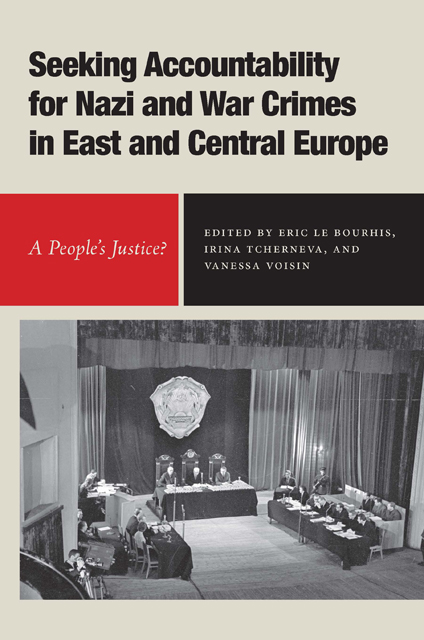Refine search
Actions for selected content:
15401 results in Military history
Figures
-
- Book:
- War, Communication, and the Politics of Culture in Early Modern Venice
- Published online:
- 15 January 2023
- Print publication:
- 05 January 2023, pp vi-ix
-
- Chapter
- Export citation
Introduction
-
- Book:
- War, Communication, and the Politics of Culture in Early Modern Venice
- Published online:
- 15 January 2023
- Print publication:
- 05 January 2023, pp 1-26
-
- Chapter
- Export citation
Acknowledgements
-
- Book:
- War, Communication, and the Politics of Culture in Early Modern Venice
- Published online:
- 15 January 2023
- Print publication:
- 05 January 2023, pp x-xi
-
- Chapter
- Export citation
1 - War, Information, and Popular Consent in Seventeenth-Century Venice
-
- Book:
- War, Communication, and the Politics of Culture in Early Modern Venice
- Published online:
- 15 January 2023
- Print publication:
- 05 January 2023, pp 27-67
-
- Chapter
- Export citation
4 - Documentary Poetics and the Literary Public Sphere
-
- Book:
- War, Communication, and the Politics of Culture in Early Modern Venice
- Published online:
- 15 January 2023
- Print publication:
- 05 January 2023, pp 156-194
-
- Chapter
- Export citation
Abbreviations
-
- Book:
- War, Communication, and the Politics of Culture in Early Modern Venice
- Published online:
- 15 January 2023
- Print publication:
- 05 January 2023, pp xv-xvi
-
- Chapter
- Export citation
3 - Printed Images and the Visual Culture of the News
-
- Book:
- War, Communication, and the Politics of Culture in Early Modern Venice
- Published online:
- 15 January 2023
- Print publication:
- 05 January 2023, pp 105-155
-
- Chapter
- Export citation
2 - Making History
-
- Book:
- War, Communication, and the Politics of Culture in Early Modern Venice
- Published online:
- 15 January 2023
- Print publication:
- 05 January 2023, pp 68-104
-
- Chapter
- Export citation
5 - Reclaiming Ancient Greece
-
- Book:
- War, Communication, and the Politics of Culture in Early Modern Venice
- Published online:
- 15 January 2023
- Print publication:
- 05 January 2023, pp 195-226
-
- Chapter
- Export citation
Epilogue
-
- Book:
- War, Communication, and the Politics of Culture in Early Modern Venice
- Published online:
- 15 January 2023
- Print publication:
- 05 January 2023, pp 227-233
-
- Chapter
- Export citation
Contents
-
- Book:
- War, Communication, and the Politics of Culture in Early Modern Venice
- Published online:
- 15 January 2023
- Print publication:
- 05 January 2023, pp v-v
-
- Chapter
- Export citation
Copyright page
-
- Book:
- War, Communication, and the Politics of Culture in Early Modern Venice
- Published online:
- 15 January 2023
- Print publication:
- 05 January 2023, pp iv-iv
-
- Chapter
- Export citation
Index
-
- Book:
- War, Communication, and the Politics of Culture in Early Modern Venice
- Published online:
- 15 January 2023
- Print publication:
- 05 January 2023, pp 284-292
-
- Chapter
- Export citation

The Cambridge History of the Napoleonic Wars
-
- Published online:
- 20 December 2022
- Print publication:
- 02 March 2023

The Memoirs of Ceija Stojka, Child Survivor of the Romani Holocaust
-
- Published by:
- Boydell & Brewer
- Published online:
- 20 December 2022
- Print publication:
- 15 November 2022

Seeking Accountability for Nazi and War Crimes in East and Central Europe
- A People’s Justice?
-
- Published by:
- Boydell & Brewer
- Published online:
- 20 December 2022
- Print publication:
- 25 October 2022
Frontmatter
-
- Book:
- Medieval France at War
- Published by:
- Amsterdam University Press
- Published online:
- 06 April 2023
- Print publication:
- 30 November 2022, pp i-iv
-
- Chapter
- Export citation
Chapter 3 - French Monarchical Power in Context
-
- Book:
- Medieval France at War
- Published by:
- Amsterdam University Press
- Published online:
- 06 April 2023
- Print publication:
- 30 November 2022, pp 35-48
-
- Chapter
- Export citation
Preface
-
-
- Book:
- Medieval France at War
- Published by:
- Amsterdam University Press
- Published online:
- 06 April 2023
- Print publication:
- 30 November 2022, pp viii-viii
-
- Chapter
- Export citation
Bibliography
-
- Book:
- Medieval France at War
- Published by:
- Amsterdam University Press
- Published online:
- 06 April 2023
- Print publication:
- 30 November 2022, pp 215-236
-
- Chapter
- Export citation
